Calendar analytics are a crucial tool for organizations striving to optimize time management and enhance productivity. Particularly within the Microsoft ecosystem, calendar analytics play a vital role in understanding the complexities of meeting schedules, resource allocation, and employee engagement.
When integrated with Flowtrace, these analytics can go beyond mere scheduling, offering insights into how time is utilized, identifying patterns in meeting frequencies, and gauging the effectiveness of team collaboration. As organizations increasingly rely on digital tools for remote work and team coordination, calendar analytics, become a necessity.
What Are Calendar Analytics for Microsoft
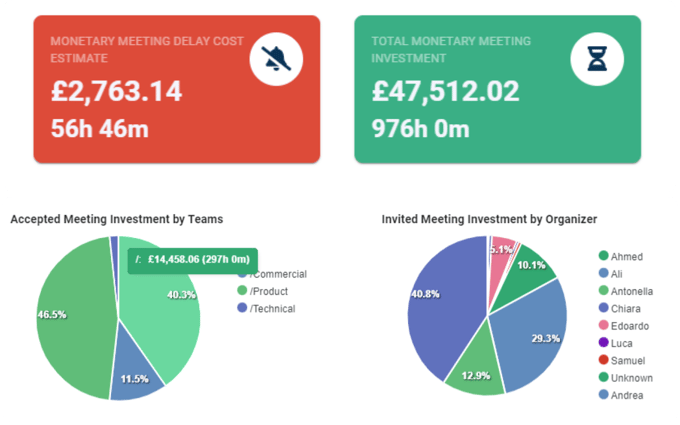
Calendar analytics, in the context of Microsoft, refers to the systematic analysis and interpretation of calendar data from Outlook to gain insights into how time is managed within an organization. However, you cannot track analytics in Outlook directly, this has to be done through lengthy external methods such as Outlook analytics via Power BI, which still lacks the data it provides.
Flowtraces integration of calendar analytics for Microsoft Outlook involves a deep dive into meeting schedules, frequencies, durations, participant engagement, and the overall effectiveness of meetings and events scheduled within Outlook.
It significantly enhances other tools that provide Outlook analytics, by offering a suite of innovative features that complement and extend Microsoft's native calendar capabilities. The focus is not just on scheduling and organization, but on understanding and optimizing the time spent in meetings and other calendar events.
Why Are Calendar Analytics Important
In today's economy and with organizations struggling with layoffs, calendar analytics offer cost savings through efficient time management and strategic resource allocation. They enable managers to gain an overview of how time is distributed across various meetings and activities, facilitating informed decision-making and productivity optimization.
When Microsoft states in their Workplace Insights, that 'overall meeting length increased by 10% in 2020' and there was a '22% increase in short meetings (for meetings lasting 30 minutes or less)', the need for calendar analytics becomes even more essential for managers to optimizing meeting culture within their organization.
Executives say that 45% of meetings are pointless and a waste of time.
With the integration of Flowtrace, managers can leverage these analytics to detect potential inefficiencies, such as meeting overload or poorly allocated time slots, and rectify them proactively. This not only streamlines workflows but also contributes significantly to enhancing overall organizational effectiveness and employee satisfaction.

Key Benefits of Calendar Analytics for Microsoft Outlook
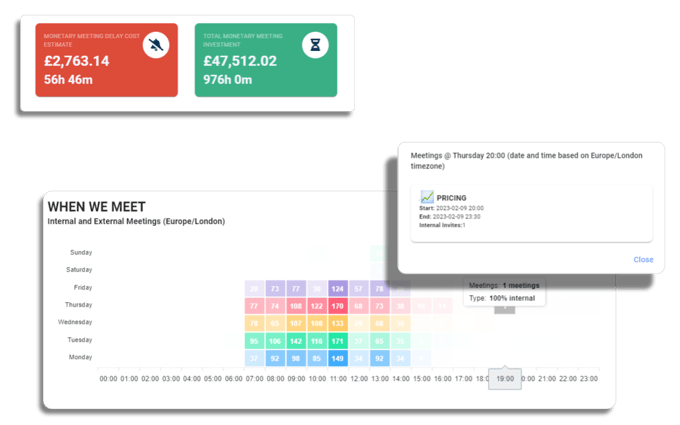
Flowtrace fills the gap that Microsoft's calendar native features may not address. While Outlook calendars proficiently handle scheduling and basic organization, we introduce a suite of advanced, insightful analytics. These add a deeper understanding of meeting efficiencies, participant engagement, and comprehensive time management.
Our integration with Outlook enables managers to analyze meeting patterns in greater detail. This includes identifying meetings that consume significant resources but yield minimal results, ensuring the right mix of participants for effective decision-making, and establishing consistent meeting practices across the organization.
The gaps in Microsoft's scheduling proficiency combined with Flowtrace's analytical depth create a robust tool for managers, aiding in strategic planning, enhancing productivity, and fostering a culture of efficiency. Benefits include:
- Identification of High-Cost, Low-Efficiency Meetings: Calendar analytics enable the identification of meetings that are financially draining yet yield minimal results. By analyzing participant feedback and meeting reviews, organizations can pinpoint which meetings are least effective and adjust accordingly. This proactive approach to meeting management can significantly enhance team productivity and save considerable amounts of money.
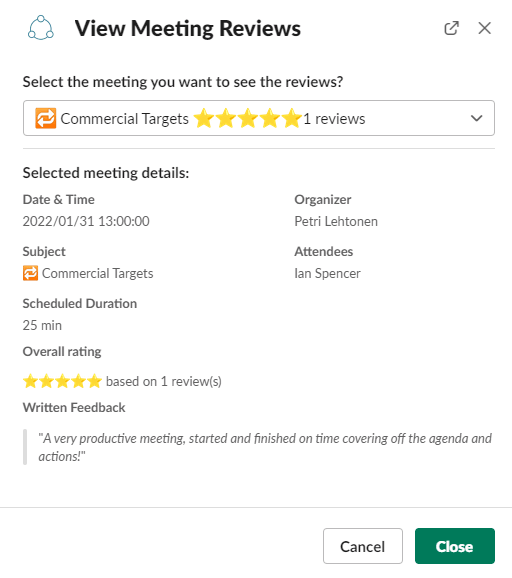
- Ensuring the Right Participants for Swift Decision-Making: Our analytics help ensure that meetings include only necessary participants, avoiding the common pitfall of unproductive meetings due to over-invitation. This focused approach to meeting organization leads to more effective decision-making and efficient use of time.
- Consistency in Meeting Practices: By offering a holistic view of meeting metrics, we help managers establish consistent meeting practices across different teams and functions. This uniformity in meeting management ensures that all teams adhere to optimized meeting practices, enhancing overall efficiency.
- Enhanced Cross-Functional Meeting Productivity: Our calendar analytics improve cross-functional meeting practices by providing insights into meeting topics, participant teams, and meeting agendas. This leads to more productive meetings and helps address issues related to meeting organization and agenda setting.
- Improved Decision-Making with Structured Agendas: By advocating for structured meetings with clear agendas, using our analytics can contribute to more effective meetings. This structure ensures that participants are well-informed and meetings are directed towards clear objectives, enhancing overall team productivity.
- Punctuality and Cost Savings: Integrating Flowtrace for analytics also focuses on improving punctuality in meetings, which directly translates to cost savings and improved efficiency. For instance, if a meeting starts late, the cumulative time lost by all participants can be significant. Analyzing and improving punctuality rates can lead to substantial savings for the company.
The Flowtrace Meeting Cost Calculator
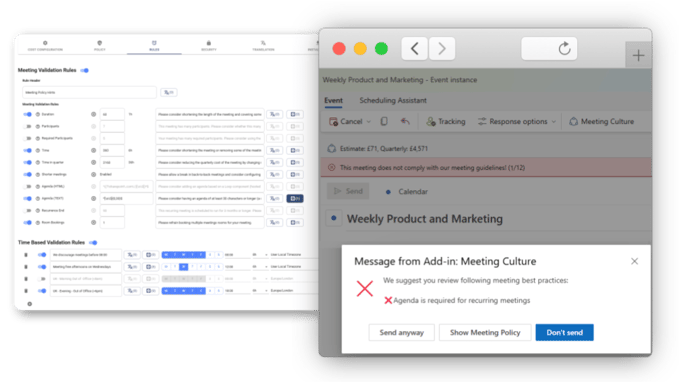
The Flowtrace Meeting Cost Calculator represents a pivotal innovation in the landscape of calendar analytics. This unique tool goes beyond traditional scheduling and organization features, providing a detailed, real-time financial analysis of meetings.
By accounting for various factors like the duration of meetings, the number of attendees, and their respective roles or salary levels, the calculator provides a comprehensive view of the financial implications of each meeting.
When integrated with Microsoft calendars, this tool becomes a powerful asset for financial planning and time management. It allows organizations to visualize the direct financial impact of meetings, promoting a more strategic approach to scheduling.
This not only aids in reducing unnecessary financial expenditure but also encourages a more disciplined, time-efficient meeting culture. In turn, this leads to more focused meetings, better resource allocation, and an overall increase in organizational efficiency.
Using Outlook Analytics to Improve Meeting Culture
Improving meeting culture in a fast-growing company is not a set-and-forget process. It requires continuous evaluation and adaptation. Often, the initial meeting practices adopted by early employees may not scale effectively as the company grows. This can lead to entrenched habits that are counterproductive to efficient internal collaboration.
Outlook analytics, especially when augmented with tools like Flowtrace, play a crucial role in this evolution. These analytics provide insights into meeting patterns, durations, and participant engagement. They move beyond mere attendance metrics to offer a deeper understanding of how meetings contribute to or detract from overall productivity.
However, analytics in isolation are insufficient. They need to be complemented by active leadership and targeted initiatives. For example, our app offers enhanced analytics capabilities, such as team and time filtering, to compare historical trends against real-time insights and benchmark teams within the organization. This helps identify which teams might be struggling with inefficient meeting practices.
Leadership action is essential in addressing these challenges. By adopting management KPIs focused on meeting productivity and fostering a culture of continuous improvement, organizations can drive significant changes. Regular review of these KPIs in management meetings can help reinforce the desired behavioral changes.
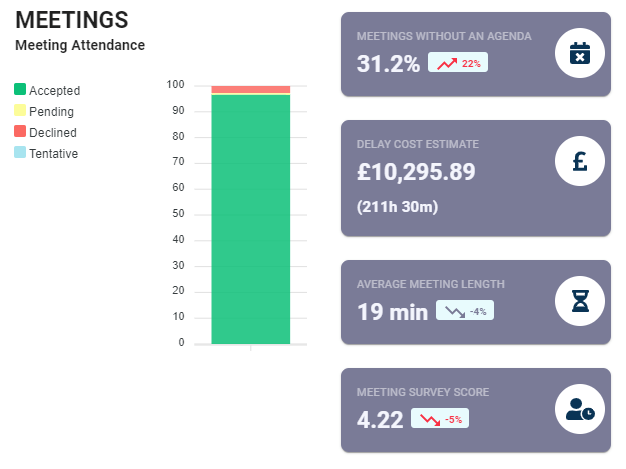
The key to sustained improvement in meeting culture lies not just in introducing changes but in ensuring they are consistently applied and ingrained into the organization's fabric. Automated metrics and KPIs play a vital role in this process, providing tangible evidence of progress and helping to maintain momentum in the drive for a more productive and efficient meeting culture.
Through these combined efforts, companies can transform their meeting culture, leading to more effective internal collaboration, better decision-making, and demonstrable ROI in terms of business productivity.
Conclusion
Calendar analytics for Microsoft Outlook are indispensable for enhancing organizational productivity and decision-making. Flowtrace significantly elevates these capabilities by offering deeper insights and practical tools like the Meeting Cost Calculator. The integration of our app with Microsoft's calendars creates a powerful upgrade that can transform an organization's approach to time management and meeting efficiency.
